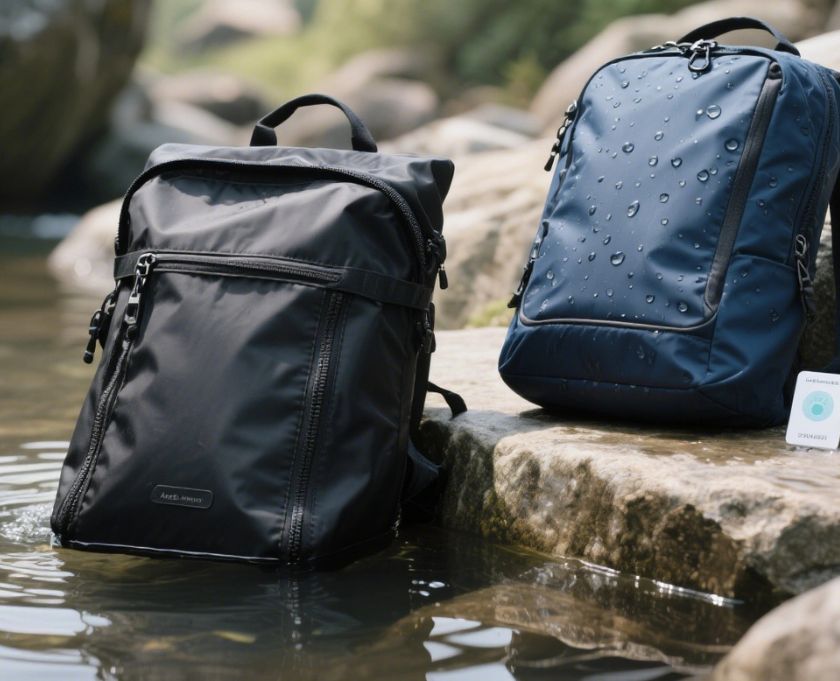Beautiful Plants For Your Interior

When you’re outdoors, weather can change in an instant. Choosing between waterproof vs. water-resistant outdoor backpacks is critical for keeping your gear safe. From protecting electronics to ensuring your clothes stay dry, the right choice can make or break your adventure.
Waterproof vs. Water-Resistant Outdoor Backpacks: Key Differences
What “Waterproof” Really Means
A waterproof backpack prevents water from entering, even during heavy rain or submersion, thanks to sealed seams and special zippers.
What “Water-Resistant” Really Means
A water-resistant backpack repels light rain and splashes but cannot handle long exposure or immersion.
Comparing Fabric Technology
- Waterproof: PVC, TPU-coated nylon, or welded seams
- Water-Resistant: DWR-coated polyester or nylon
Advantages of Waterproof Backpacks
Complete Protection Against Rain and Submersion
Keeps electronics, documents, and clothes completely dry.
Ideal for Water Sports and Heavy Rain
Perfect for kayaking, fishing, or monsoon hiking.
Enhanced Durability with Sealed Seams
Built to withstand extreme conditions.
Disadvantages of Waterproof Backpacks
Heavier and More Expensive
Premium materials and construction add weight and cost.
Less Breathable and Flexible
May feel stiffer than standard packs.
Advantages of Water-Resistant Backpacks
Lightweight and Comfortable
Great for day hikes, city trips, and commuting.
More Affordable and Stylish Options
Available in a wide variety of designs.
Perfect for Daily Travel and Light Hiking
Adequate for most urban and short outdoor uses.
Disadvantages of Water-Resistant Backpacks
Limited Protection in Heavy Rain
Water may seep in during storms.
Vulnerable Zippers and Seams
Weak points where moisture can enter.
Best Use Cases: Waterproof vs. Water-Resistant
For Hiking and Backpacking
- Waterproof: Long treks in unpredictable weather
- Water-Resistant: Dry climates and light trails
For Commuting and Urban Travel
- Water-Resistant: Perfect balance of comfort and style
For Kayaking, Fishing, and Water Sports
- Waterproof: Essential for gear safety
Comparison Table: Waterproof vs. Water-Resistant Outdoor Backpacks
| Feature | Waterproof Backpack | Water-Resistant Backpack |
|---|---|---|
| Rain Protection | Full (even submersion) | Light to moderate only |
| Weight | Heavier | Lightweight |
| Price | Higher | More affordable |
| Durability | Extremely durable | Moderate durability |
| Best Use | Heavy rain & water sports | Commuting & light hiking |
Expert Tips for Choosing the Right Backpack
- Choose waterproof if you carry electronics or camp in rainy areas.
- Choose water-resistant if most of your trips are urban or fair-weather hikes.
- Consider a rain cover for extra versatility.
Common Mistakes When Buying Outdoor Backpacks
- Confusing water-resistant with waterproof
- Ignoring zipper and seam quality
- Buying only for looks instead of performance
- Not considering weight when hiking long distances
Frequently Asked Questions (FAQs)
Q1: Can I make a water-resistant backpack waterproof?
A: You can improve resistance with sprays and rain covers, but not full waterproofing.
Q2: Are waterproof backpacks worth the higher price?
A: Yes, if you often travel in wet environments.
Q3: How do I maintain a waterproof backpack?
A: Clean with mild soap, avoid harsh chemicals, and reapply waterproof coatings as needed.
Q4: Can a water-resistant backpack survive a sudden downpour?
A: Yes, briefly—but it won’t protect against prolonged exposure.
Q5: Which is better for everyday commuting?
A: Water-resistant backpacks are usually sufficient.
Conclusion: Picking the Right Backpack for Your Adventures
When choosing between waterproof vs. water-resistant outdoor backpacks, the best option depends on your lifestyle. For wet and unpredictable adventures, go waterproof. For everyday commuting and light outdoor trips, water-resistant is enough. The key is knowing your needs and balancing comfort, price, and protection.